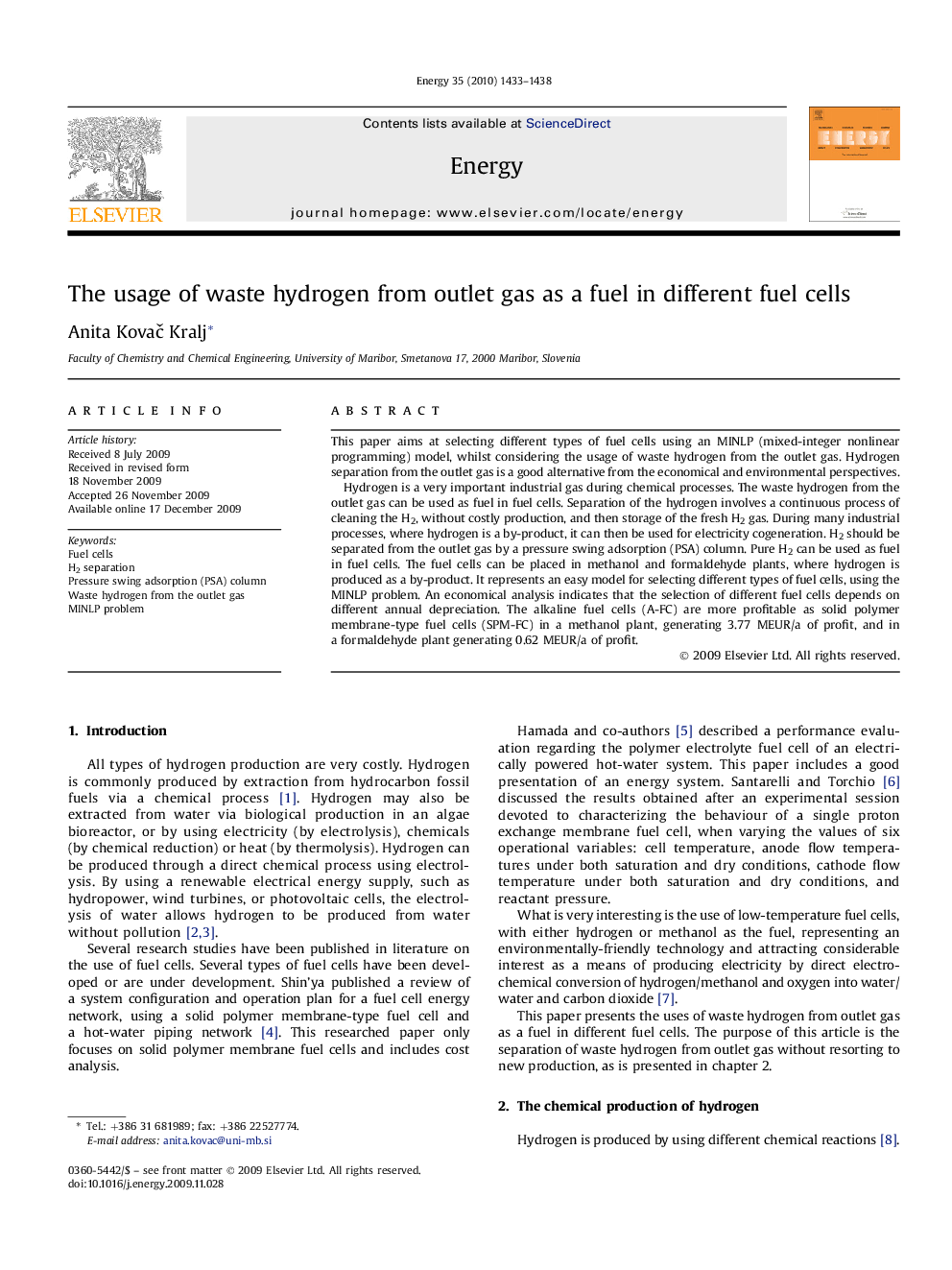| Article ID | Journal | Published Year | Pages | File Type |
|---|---|---|---|---|
| 1735369 | Energy | 2010 | 6 Pages |
This paper aims at selecting different types of fuel cells using an MINLP (mixed-integer nonlinear programming) model, whilst considering the usage of waste hydrogen from the outlet gas. Hydrogen separation from the outlet gas is a good alternative from the economical and environmental perspectives.Hydrogen is a very important industrial gas during chemical processes. The waste hydrogen from the outlet gas can be used as fuel in fuel cells. Separation of the hydrogen involves a continuous process of cleaning the H2, without costly production, and then storage of the fresh H2 gas. During many industrial processes, where hydrogen is a by-product, it can then be used for electricity cogeneration. H2 should be separated from the outlet gas by a pressure swing adsorption (PSA) column. Pure H2 can be used as fuel in fuel cells. The fuel cells can be placed in methanol and formaldehyde plants, where hydrogen is produced as a by-product. It represents an easy model for selecting different types of fuel cells, using the MINLP problem. An economical analysis indicates that the selection of different fuel cells depends on different annual depreciation. The alkaline fuel cells (A-FC) are more profitable as solid polymer membrane-type fuel cells (SPM-FC) in a methanol plant, generating 3.77 MEUR/a of profit, and in a formaldehyde plant generating 0.62 MEUR/a of profit.
